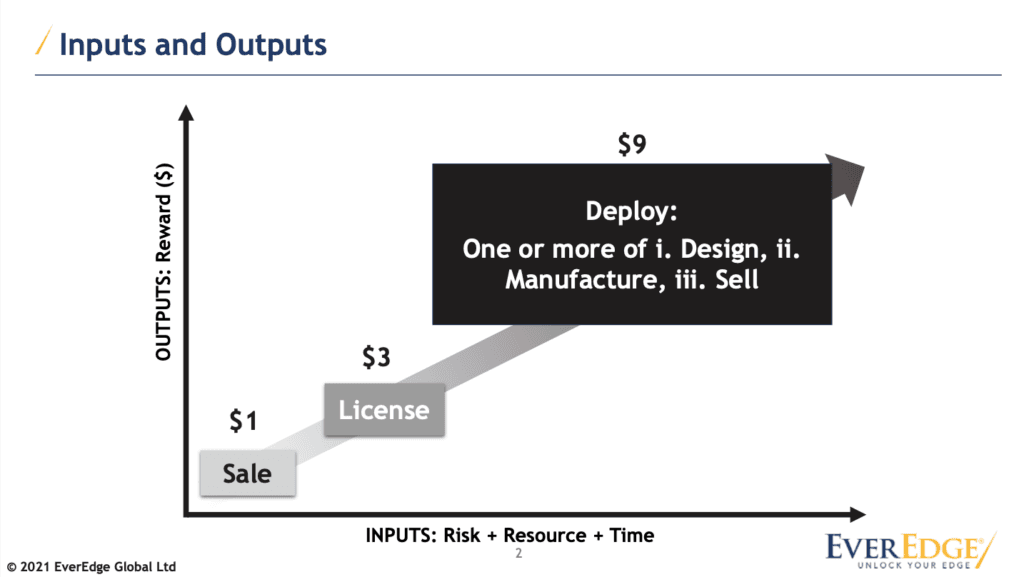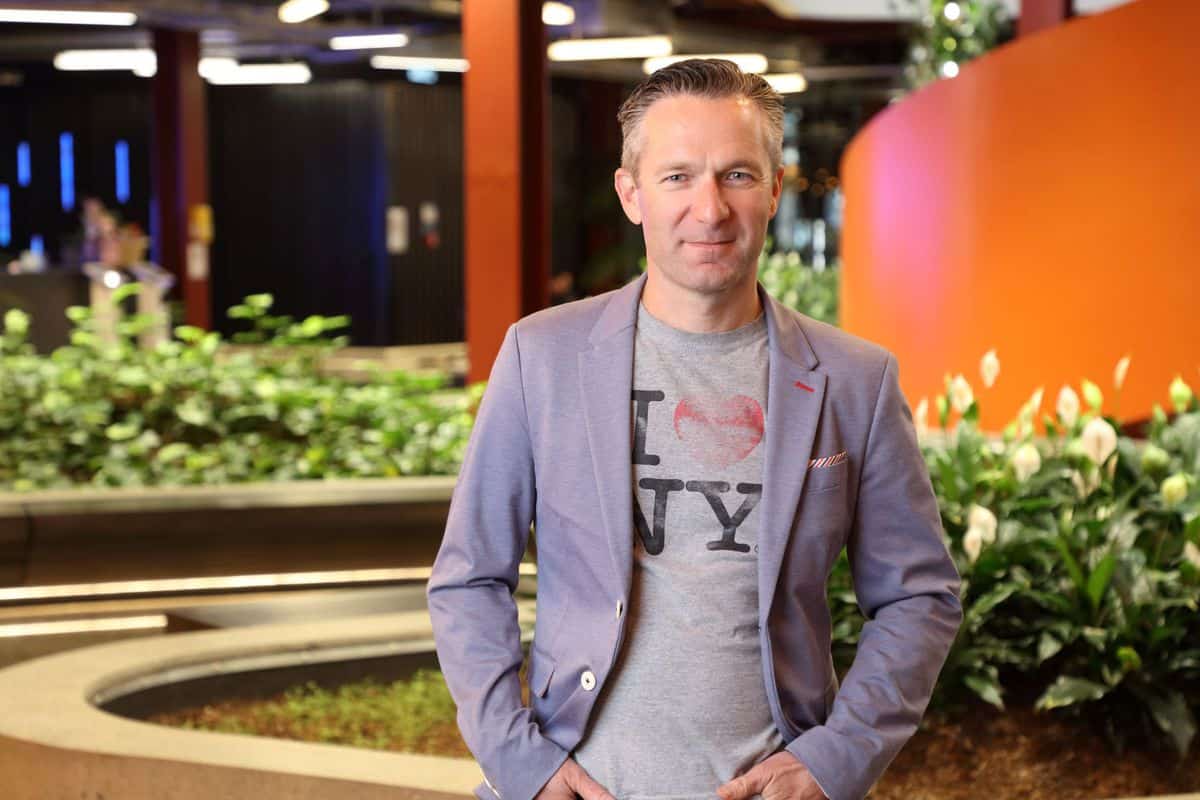Businesses often limit their expansion by focusing on deploying their product or service at the expense of developing licensing, asset/technology sale or leaseback agreements, according to Paul Adams, Chairman and CEO NZ of EverEdge Global. Dynamic Business sat down with Paul to discuss an often-overlooked growth strategy.
Single-minded entrepreneurial passion is a powerful force. Sometimes that tunnel-vision breeds success but sometimes it limits growth. Paul argues that most entrepreneurs are consumed with the deployment of their business concept and fail to consider two other business models that could be used to commercialise their intangible asset or product idea.
“Deployment means you do at least one out of three fundamental economic transitions,” explains Paul. “And those are you design the product – so R&D – or you manufacture the product, or you sell the product.
“The classic is that I come up with an idea, I submit my design, I manufacture it, and then I sell it to customers. That is deployment, and where 99 per cent of business activity takes place. And it doesn’t matter if it’s a product or service; it’s actually the same.
“With licensing, you come up with the idea, but you then enable somebody else to utilize that idea, and in return, they pay you some kind of royalty payment. That royalty could be expressed in different ways: it could be a one-off payment or ongoing royalty payments over an extended period of time. But the basic idea is I’m not deploying. All I’ve done is I’ve come up with the idea, and I’ve now given it to somebody else who is deploying.”
Selling an asset or technology has several benefits. There is minor capital investment, it generates immediate cash, it releases value in otherwise redundant or unused assets, and it shifts the R&D risk to the buyer. Sales discussions also sometimes lead to licensing or partnership discussions.
“With an outright sale, I’ve come up with an idea, and I sell this to somebody else and receive a one-off payment, but I’ve alienated the IP or the intangible asset from myself. The new owner can either license it on, or they deploy themselves,” explains Paul.
As well as licensing or simply selling a clever idea, manufacturers have a third option: sale and leaseback. An example of this is where you may sell an idea but retain the right to use it in Australia for your own purposes. This right is transferred back by way of a license.
Why licensing makes sense
There are several reasons to choose to license over deployment. It requires limited capital investment, allows rapid mass distribution, manufacturing scale becomes irrelevant, and it allows companies to access unreachable distant markets.
Another important advantage is they can provide higher margins. This is apparent in the following chart, which shows that full deployment provides the greatest rewards but requires the greatest time, resources, and risk.
The inputs and outputs involved in deployment, licensing and sale are shown below:

Expanding on this chart, Paul explains: “In other words, the more you put it in, the more you get out, like most things in life. What’s really interesting, however, is that’s not margin. When we take into account the relative balance of the inputs and the outputs in terms of absolute dollars, sometimes you can make a lot more margin selling or licensing.”
Paul warns that licensing isn’t for everyone and says it must fit in with the company’s broader strategy. It is also not suited to companies that have weak IP positions or weak intangible asset positions. And he says that while it’s possible to license domestically, it is most profitable in export markets, particularly for Australian and New Zealand companies exporting to much larger markets.
The methodology makes distance irrelevant because you’re shipping ideas, not widgets. Additionally, if you choose the right partner, you can get rapid mass distribution because you’re using somebody else’s distribution channel.
How it works
Paul demonstrates the benefits that can be derived from a licensing approach by telling the story of a client:
“We had a client who came to see us, and they were exporting a fresh dairy product. So, they could only have been a New Zealand company because nobody else is crazy enough to try to export a fresh dairy product.
“We looked at what they’re doing and said, ‘Hey, that’s a really cool packaging that you’ve got there.’ And they went, ‘Oh yeah, we developed this packaging.’
“We said, ’Rather than trying to export fresh dairy, why don’t you license the packaging technology?’ And they replied, ‘What we’ll do is go around the world, set up factories, make the cups and sell them.’
“And we said, ‘Look, you don’t have the balance sheet for that; these factories pump out millions of cups a day. You can’t afford to build even one of them. And not to mention the fact that even if you did build it, what would you do with all the cups? You don’t have the distribution channel to sell them. Why don’t we license it instead?’
“So, we helped them to run a big licensing campaign, and they now ship over a billion units, and they get a royalty on every single unit. And that royalty on every single unit on billions of units adds up to a lot. And it’s almost entirely margin; there’s virtually no cost associated.
“What we did for this company is that we increased their EBITDA by 15-fold by running the licensing campaign. And here’s the real kicker: as a manufacturing company, it might normally trade at a multiple of somewhere between four and six in terms of valuation of the company.
“Let’s just call it four, to make it easy and be conservative. A 15-fold increase in the value in EBIT is equivalent to a 60-fold increase in the value of the company. But it’s better than that. Because licensing revenue is very durable, very sustainable, and very predictable, it typically attracts a much higher multiplier.
“One of the things that a lot of business owners don’t understand is not every dollar of EBIT is the same. It’s not always worth the same. The dollars of EBIT you derive from something like licensing are worth a lot more than another dollar of EBIT selling a product or service. So typically, a licensing royalty or licensing stream might attract between 200 and 250 per cent of the multiplier of the underlying industry.
“By that I mean, instead of you earning four times multiplier, you might earn eight. In which case, now we’re talking eight times 15-fold increase in EBITDA value means you’ve increased the valuation of the business, 120-fold.”
How to find a suitable licensing partner
Not all licensing partners are created equal. When searching for the best partner, Paul recommends asking the following question: Who’s the biggest global user of my technology or product?
“If you’ve developed a new technology for garage doors, ask who installs the most garage doors globally,” he says. “Who is big in garage doors and home security? They are the first people to go and see and all of their competitors. And look, that’s not a failsafe methodology, but it’s the 80:20 rule.”
Paul says it has never been easier to find suitable partners. People no longer need to get on a plane with a suitcase full of samples. They can conduct their research and reach out to potential partners from their lounge rooms.
And as Paul observes, “I’ve done it during the pandemic, and as anybody who’s ever stood in a security line in the United States would tell you, it’s a lot easier from home. There’s virtually no capital down, and it’s not denuding the business in any way.”
Read more: How Aussie businesses can boost their sales value despite the impact of COVID-19
Keep up to date with our stories on LinkedIn, Twitter, Facebook and Instagram.


